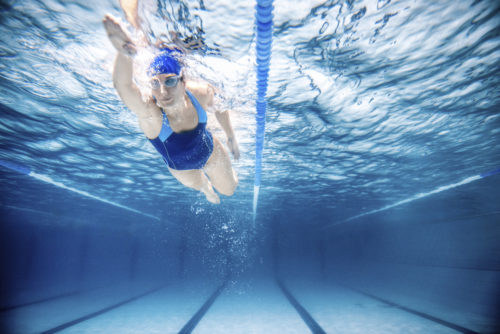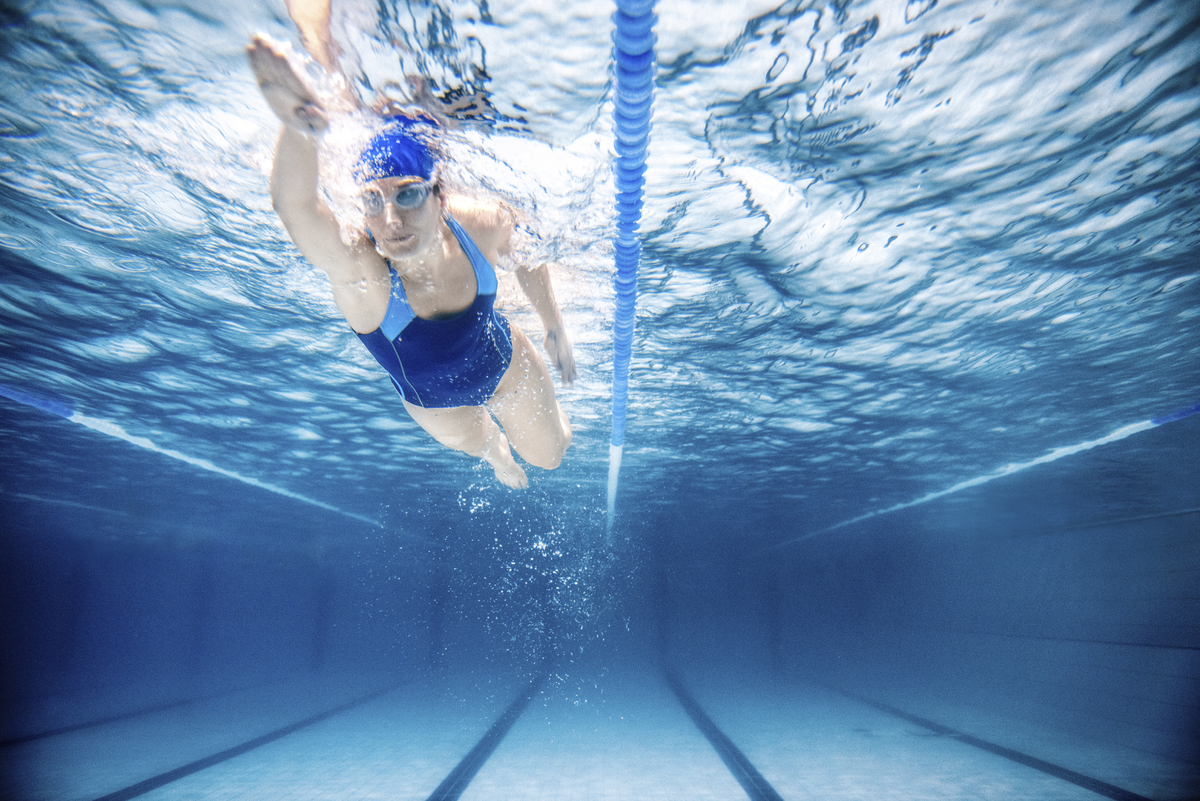From theory to implementation: Swim BC’s application of Swimming Canada’s new Athlete Development Matrix
 In spring 2020, Swimming Canada unveiled their new Athlete Development Matrix (ADM) to the provincial/territorial sport organizations (PTSOs) nationwide. The matrix provides guiding principles for PTSOs to take back and tailor to their own program’s needs and goals.
In spring 2020, Swimming Canada unveiled their new Athlete Development Matrix (ADM) to the provincial/territorial sport organizations (PTSOs) nationwide. The matrix provides guiding principles for PTSOs to take back and tailor to their own program’s needs and goals.
For Swim BC and their Technical Director Cory Beatt, the new ADM provided a framework for a cross-organization shift in athlete development which is currently being implemented.
Swimming Canada’s ADM Pillars
Swimming Canada’s ADM includes four pillars:
- physical capacities;
- technical, tactical or strategic competencies;
- mental or psychological skills; and
- life skills (cognitive, social and emotional learning skills).
Each pillar exemplifies the various competencies organizations should be encouraging athletes to demonstrate at each stage of development, and works in tandem with the Long-Term Development framework, which Swimming Canada adapted to the Appropriate Athlete Development.
As Swimming Canada’s Director of Operations & Sport Development Suzanne Paulins explained, each PTSO will have different priorities and capacities to implement the ADM. The principles ensure flexibility and applicability across various organizations and allow for alignment with each PTSO’s individual strategic goals.
And, importantly, Swimming Canada remains an available asset to all PTSOs as they build out their strategies with this ADM in mind. For Swim BC, that partnership and access to Swimming Canada’s various discipline experts (e.g., the senior program, youth development, open water swimming, para, etc.) has been essential as a feedback loop in narrowing in on their new principles and initiatives.
Swim BC’s Implementation
Within Swim BC, Beatt recognized a need in 2021 to align their various partners (including CSI Pacific, Swimming Canada, and Swim BC’s general membership and performance development committee) towards a common goal. This included consultation at all levels of Swim BC, from club to high performance.
Following an audit through the summer of 2021, Swim BC worked with Swimming Canada’s ADM and the feedback from those interviewed in the audit to build a revised provincial program with new programming opportunities and principles to move the organization forward: the True North Principles.
The True North Principles
Guided by Swimming Canada’s four pillars, the True North Principles encompass well-being, opportunity, process, effort and collaboration. The principles also consider their swimmers as athletes developing on the pathway and, importantly, as customers or clients.
What does that mean? For Beatt, that considers the athletes and parents from their initial awareness of Swim BC, their consideration of Swim BC (e.g., how swimming will fit into their lifestyles), their trial of the sport, their engagement, their advocacy, and finally, their contributions to the sport.
Swim BC can consider all of their athletes rather than solely the top performers in the Appropriate Athlete Development framework with this mindset. And, in combination with the four pillars of the ADM, they can build content around physical capacity, mental skills, technical skills and life skills with a strong, guiding vision.
Practical Application of the Athlete Development Matrix
Beatt, with feedback and support from Swimming Canada, has started building new programming opportunities for Swim BC’s membership (coaches and swimmers) that benefit all levels of the sport.
Currently, Beatt is working on a Learning Hub, which provides extended learning opportunities to Swim BC members. Elements of the ADM have been considered throughout, with experts providing support in developing the learning modules.
Once done, the Learning Hub will give Swim BC members opportunities to practice what they learn in various Swim BC workshops, among other presentations. The hope is that the program will support the ongoing development of skills, rather than just touching on topics.
“Skills take time and effort to develop. We’re investigating ways to create content that would engage people for longer periods and that they have to put a little effort into,” Beatt explained.
And, importantly, these programs are available to all Swim BC members, not just high performance coaches and athletes.
Going forward, Beatt is aware that this kind of project is evolutionary. He is looking to evaluate the implementation of the principles and the Learning Hub through:
- registration at various ages and levels, retention;
- conversions from level-to-level of the sport;
- engagement from membership in initiatives like the Learning Hub; and
- performance and race results in comparison with other provinces.
“What I like about Cory’s [work] is that he sees it as a living document and something that isn’t necessarily set in stone. It will continue to adapt and grow as we learn more information,” Paulins said.
The Learning Module is just one example of the changes Beatt is implementing to reimagine Swim BC under the ADM.
On a national scale, Beatt is also engaging counterparts at Swim Alberta in building healthy competition amongst all levels of the sport with the Golden Flipper Challenge. On an annual basis, race times from across all levels of swimming tally towards a provincial total for both BC and Alberta, focusing on a specific stroke; the winning province is the one with the overall best time. Several tiers have been developed to inspire and engage each organization’s entire membership, with micro challenges set to meet the age and stage of development of all athletes and coaches. This year, that focus is the butterfly.
From Swimming Canada’s perspective, Swim BC’s Learning Hub also aligns with the reenvisioning of the National Coaching Certification Program (NCCP) content for swimming, which is currently in review.
“All of these things dovetail together and work to support one another,” Paulins said. “It’s really about collaboration and alignment to the overall national perspective.”
Takeaways
When considering collaboration between NSOs and PTSOs, the following are several important takeaways from Swim BC and Swimming Canada’s experience:
- Make collaboration frequent and purposeful: Engage the right people at the right time to understand the when, how and why of the implementation.
- Collaborate with a growth mindset: Move things forward and challenge the status quo by looking at things differently, learning and growing together, rather than keeping implementations fixed once released.
- Understand the common goal: Build relationships from a common goal to purposefully work toward achieving results.
Start at the beginning: The thought of developing proactive relationships, creating alignment, and building resources will feel daunting. Don’t let this stop you from starting. Take the first steps, make some mistakes, learn from the mistakes, and let the moment carry it forward.


